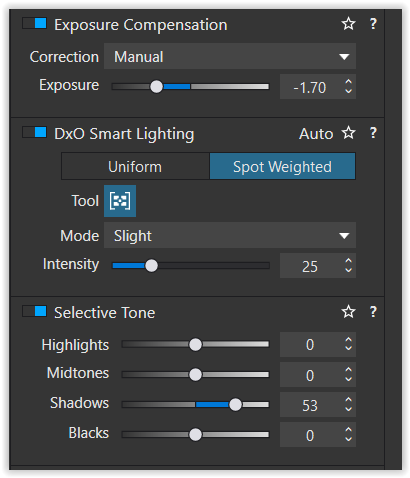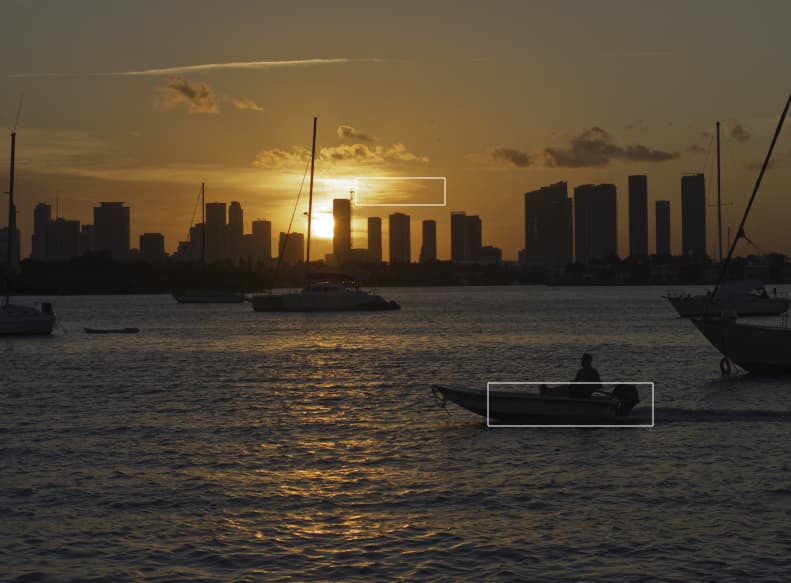Ok, got it ![]() → ‘discard’ the camera’s exposure compensation setting, readout from metadata …
→ ‘discard’ the camera’s exposure compensation setting, readout from metadata …
Being not very familiar with ETTR +1,7 (doing people and concerts, but seldom landscape) I don’t know really, if to simply revert the +1,7 in-camera-correction is suffcient.
Tried now with Mike’s pic, but also had to use SmartLighting spot weighted
and Selective Tone / Shadows

To revert exposure correction didn’t work on it’s own → such a drop down option is questionable.
